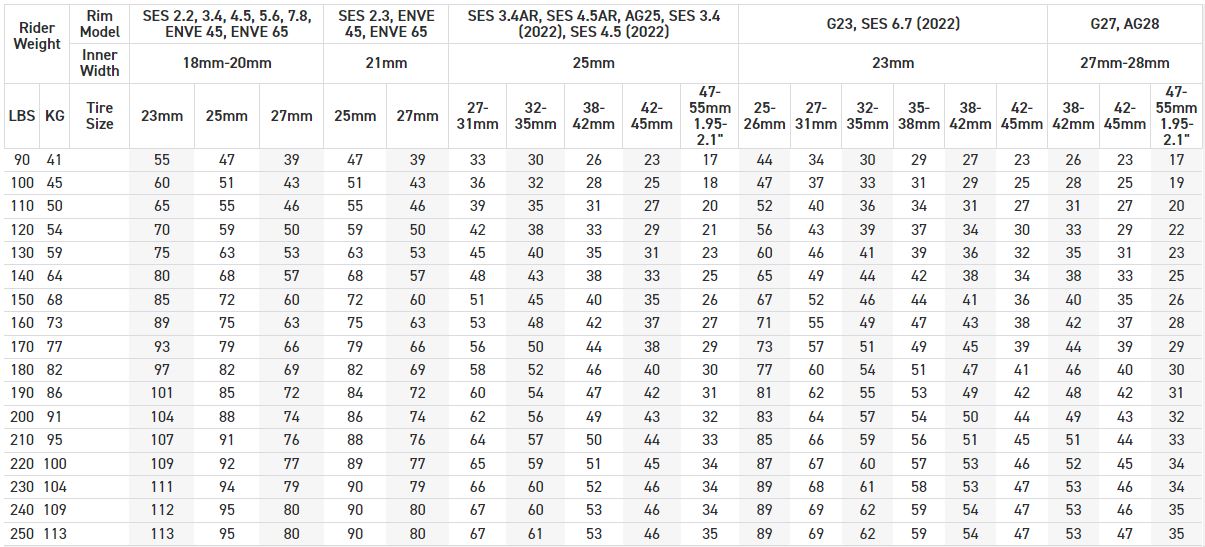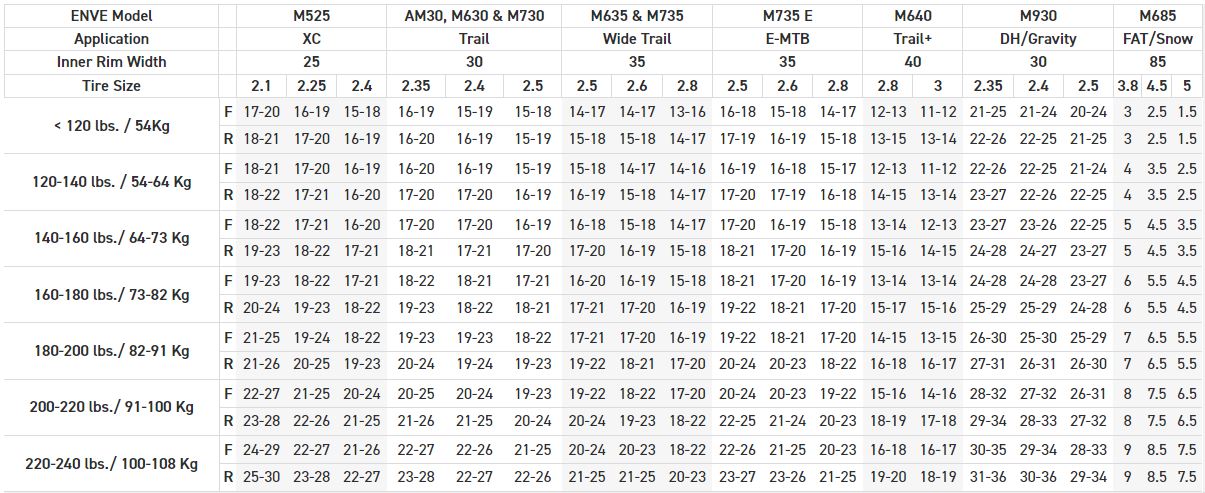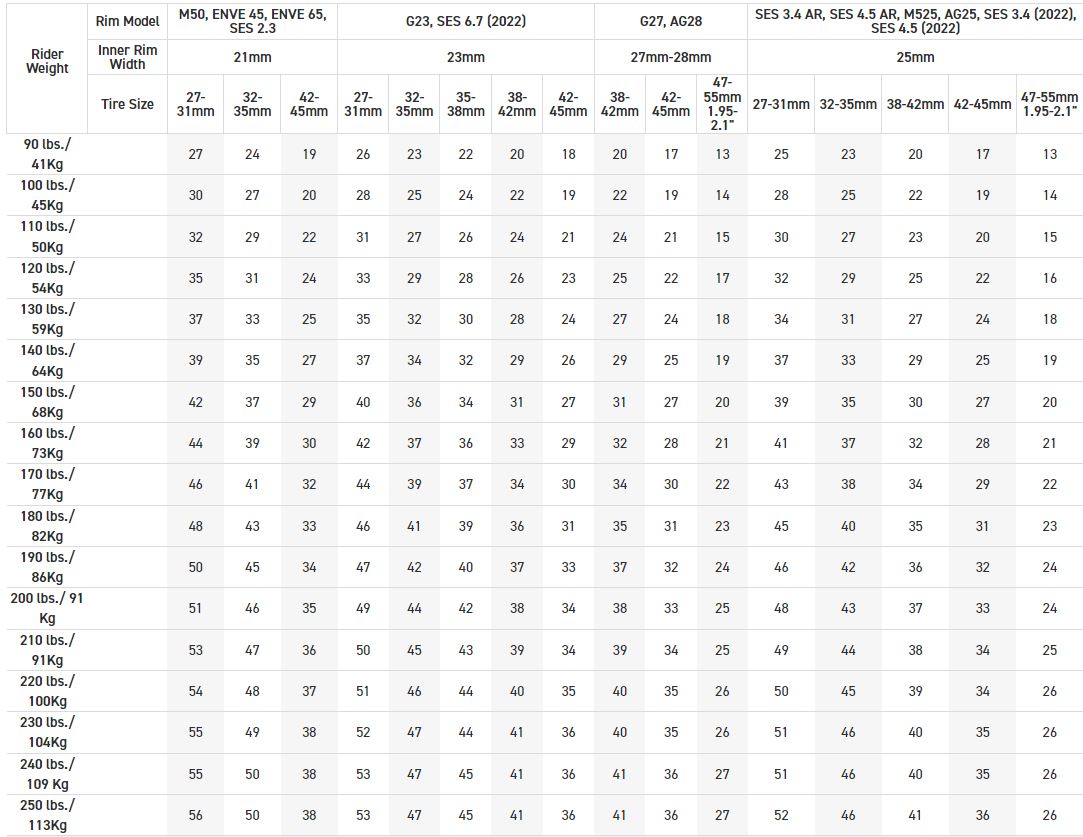Tubeless Tire Pressure
Recommendations
Recommendations

This page is about helping you go faster with more confidence. Everything about the design and construction of your ENVE wheelset exists for this purpose. However, no matter how good your wheelset is, or how talented you are as a rider, running the wrong tire pressure will make you slower and compromise your ride experience. With that in mind, take a look at the tire pressure charts below to ensure that you’re in the right ballpark when it comes to the tire pressures you’re running.
There are three charts – one for road/paved surfaces, another for gravel/dirt road surfaces, and another for mountain bike applications. Each chart highlights the corresponding ENVE rim models that are commonly used for these surfaces, and if you are not riding ENVE, no worries, simply refer to the inner rim width to find the right pressure for your wheelset.
ENVE Maximum PSI Ratings
SES (Hooked Versions Pre- 2022) = 120 psi (23-28 mm Tire)
SES Hookless = 80 psi (SES 3.4, SES 4.5) (27-29 mm Tire), 67 psi (>30 mm Tire), 90 psi (SES 2.3, SES 6.7) (25 mm Tire)
Foundation Road = 90 psi (25mm Tire), 80 psi (>27 mm Tire)
SES AR = 80 psi (27-29 mm Tire), 67 psi (>30 mm Tire)
G23 = 60 psi (32-40 mm Tire)
G27 = 40 psi (42-50 mm Tire)
AG28 = 45 psi (45-55 mm Tire)
AG25 = 55 psi (32-40 mm Tire), 50 psi (41-50 mm Tire)
M Series & AM30 = Varies per Model
Note: Tire pressures are intended as a starting recommendation based on the listed wheel being set up with tubeless tire. The pressure value is calculated considering a tubeless set up, intended road surface, rider's weight with full gear, average bike weight, inner rim width, and tire volume.

For high-traction trail conditions, the upper end of our recommended pressures may not be sufficient. Therefore, we recommend that you increase your tire pressure 5-10% at a time until you find your optimal tire pressure. Examples of high traction conditions would include loam, sandstone/slickrock, tacky flow trails, etc…
If running tires with double ply, triple ply, or DH casings, consider testing the lower range of the recommended tire pressures and move up or down from there until you’ve found your optimal tire pressure.

Note: Tire pressures are intended as a starting recommendation based on the listed wheel being set up with tubeless tire.
The pressure value is calculated considering a tubeless set up, intended road surface, rider's weight with full gear, average bike weight, inner rim width, and tire volume.


